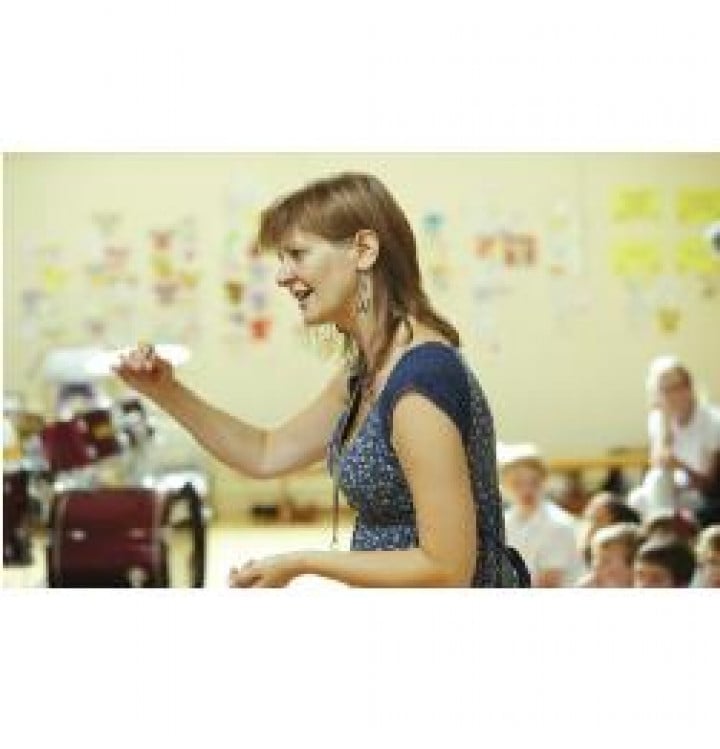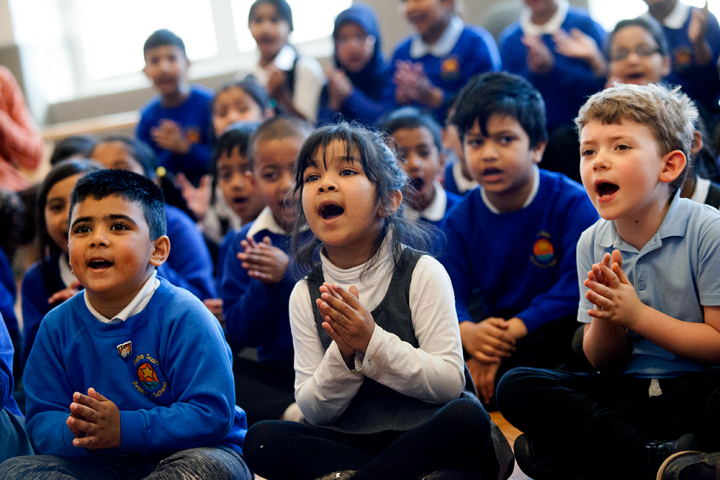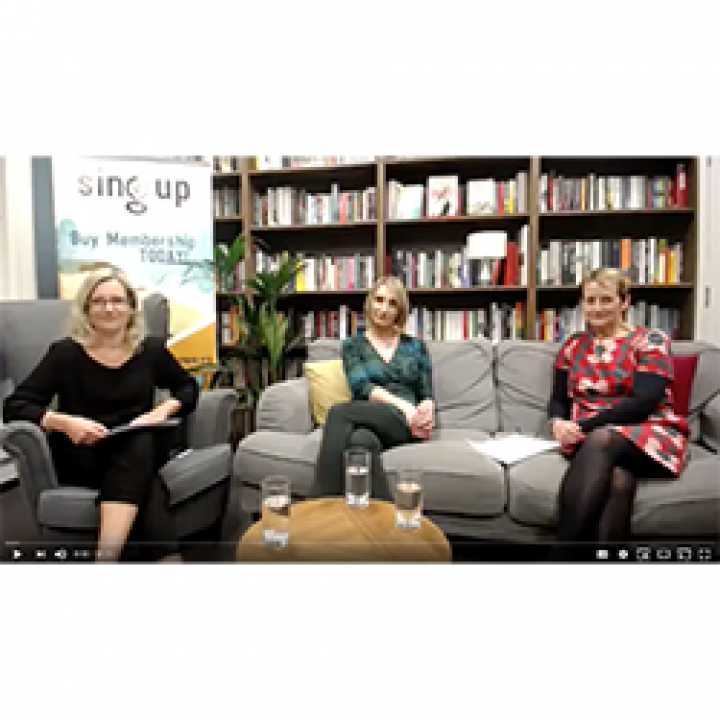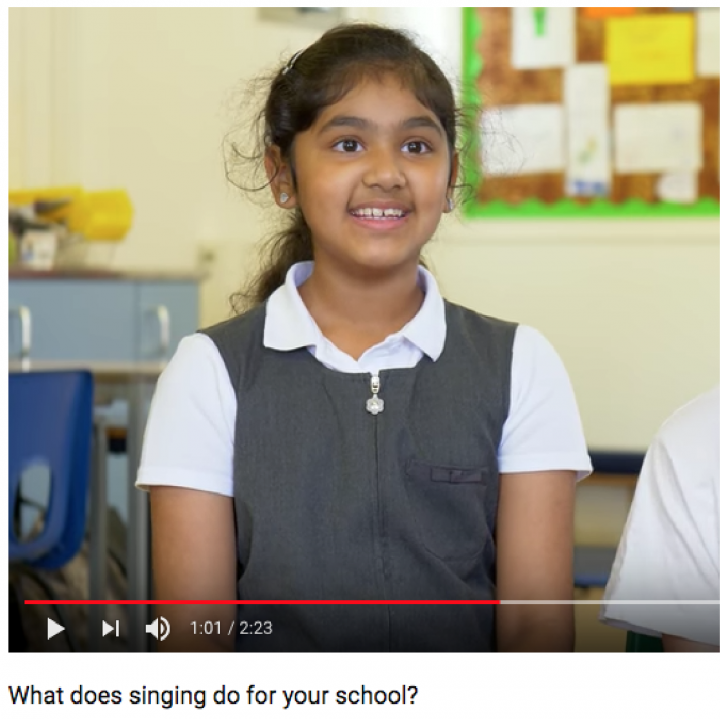
I’ve heard some teachers say that they haven’t got time to sing. That’s why we’ve tried to develop lots of ways of using singing to save time and help the day run smoothly. Here are a few of my favourites.
The name game
One really easy way to make sure you sing every day is to sing the register. Quite often, a child will sing the names while the teacher does the legal bit. It has definitely improved listening skills and pitch awareness, and is a good way to explore vocal expression. It’s also another great way of encouraging Young Singing Leaders.
Settle down
Singing is a great way to settle a class or to quickly get attention. We like to use short, easy call-and-response songs such as Kye kye kule. This is an excellent song for encouraging Young Singing Leaders, too, as children soon want to take the role as caller. It’s a fantastic song for coming into assembly. Just start the song off and it can keep going round as each caller chooses the next one.
Other songs from the Sing Up Song Bank that can be used in the same way are A Keelie and Boom chicka boom.
Any time, any place...
If you haven’t used ‘transition’ songs yet, you’re in for a treat! These songs and chants can be used throughout the day. Sing Up has a bank of them, but it’s so easy to make up your own, too! Just choose a well-known tune and decide what you need the children to do – they are also great at coming up with ideas!
To get you started, this is our lining up song to the tune of Frère Jacques:
‘Let’s line up [x2]
One at a time
In a line
Eyes are facing forward
Arms are by our side
Voices quiet
Lips are shut.’
(Find another variation here) We sometimes internalise the tunes so that we sing the first lines but then sing the rest in ourheads, just doing the actions. It’s amazing how quickly and quietly the children line up when doing this! It can also be sung as a round, with each table group joining in as they are called.
When a class is tidying up at the end of a lesson or before a plenary session, you could also have a song playing, with the expectation that children can join in once they have finished tidying away. I’ve found Maths? Oh yeah! is a good one for this.
Play along
There are plenty of clapping, skipping and action songs that are great for playground singing. I took some Year 4 children on a singing workshop, which was packed with great ideas. The children then taught the songs to the whole school in a singing assembly.
I’ve found another great way to encourage singing in the playground is to attach song lyrics or titles to classroom windows that face out onto the playground. I took my choir to sing at The O2 Arena and one of their favourite songs was a pop medley. I put this up in the window and every playtime there would be a group of children singing away!
Top tune
Each week we choose a simple and catchy ‘Song of the Week’, which is normally taken from the Song Bank. When faced with so much choice, this helps to give a shared focus and a bank of songs that everyone will know.
We also like to find ways to vary the songs and create our own lyrics, which has led to a lot of songwriting in the school. Alice the camel is a great one to use to rein force key information, eg. we have changed the words to 2D shapes and punctuation rules.
Follow the leader
Singing the register and call-and-response songs are a great first base for raising children’s confidence on their route to becoming Singing Leaders. Using action songs is useful, too, because you aren’t necessarily relying on the best singers. All sorts of children are happy to lead actions and soon progress to leading other singing. Having a larger group to help in assemblies creates a ‘safety in numbers’ feel and encourages children who wouldn’t normally volunteer.
Sally’s top tips for getting other teachers singing!
With teachers already being so busy, we’ve tried to incorporate singing activities that are time-saving and can be used as integral rather than additional.
Sing at staff meetings
I find teachers are more inclined to use the songs with their class once they’ve had a go themselves, so we always try a few during staff meetings. We cover a range of songs that can be used for class management, lesson starters/plenary, learning tools for main lessons and also action songs for our physical activities programme.
Weekly singing has helped teachers to find their voices and break down their inhibitions. My favourite was doing A young Austrian, complete with sound effects and actions!
Enthusiastic children are a real incentive for encouraging teachers to sing and promising a favourite song in exchange for good work and behaviour can work a treat! A chart acts as a reminder of songs the class likes to sing. We create monthly posters of favourites so we don’t have to rack our brains trying to remember what to sing.
Choose a ‘Song of the Week’
Each week, I teach our Song of the Week to the staff at the beginning of our staff meeting and to the children in Singing Assembly. We also let parents know in our weekly newsletter. In the beginning, we started off with chants and call-and-response songs. As most of them are on Sing Up, I link to them on our Staff Share area of the school computer network. Each teacher also gets a paper copy to keep in a class Song of the Week folder. The more accessible the songs are, the more likely they are to be sung!
Our teachers and teaching assistants are now much more confident and inclined to find their own songs to enhance a topic, or modify an existing song. We even sing just for fun!
Sally Merson
Want more?
- Take a look at our lesson and topic plans for cross-curricular inspiration
- Don’t forget – we love to hear from you. If you’ve got a success story to share, let us know.



